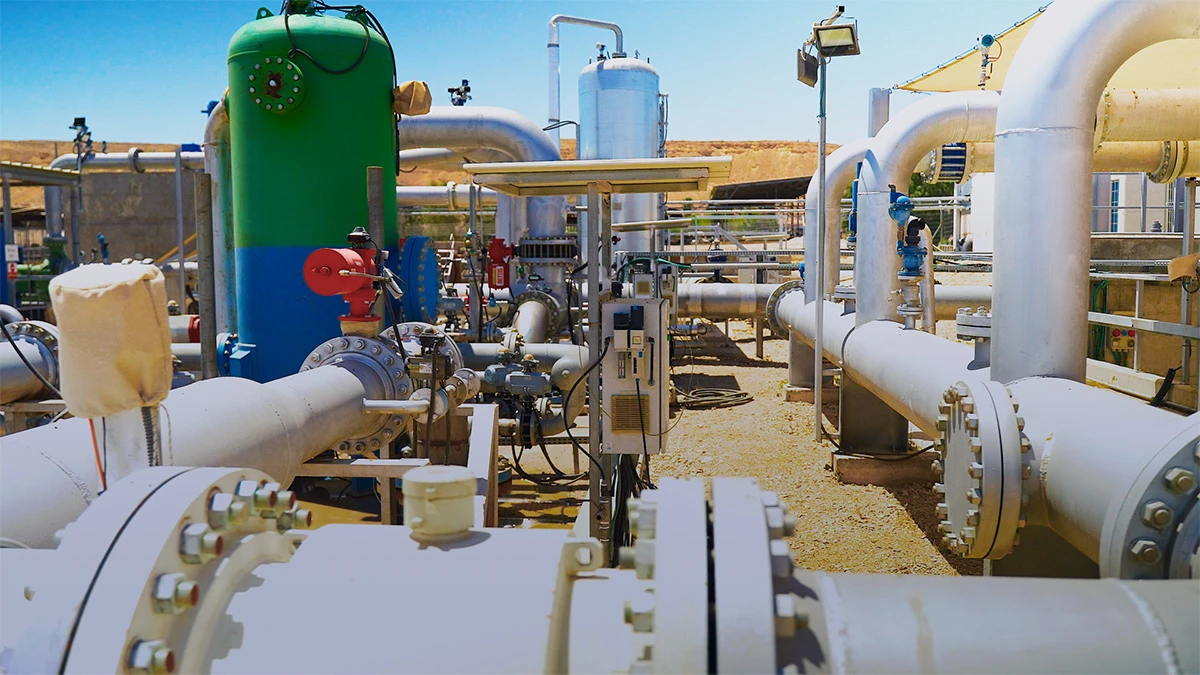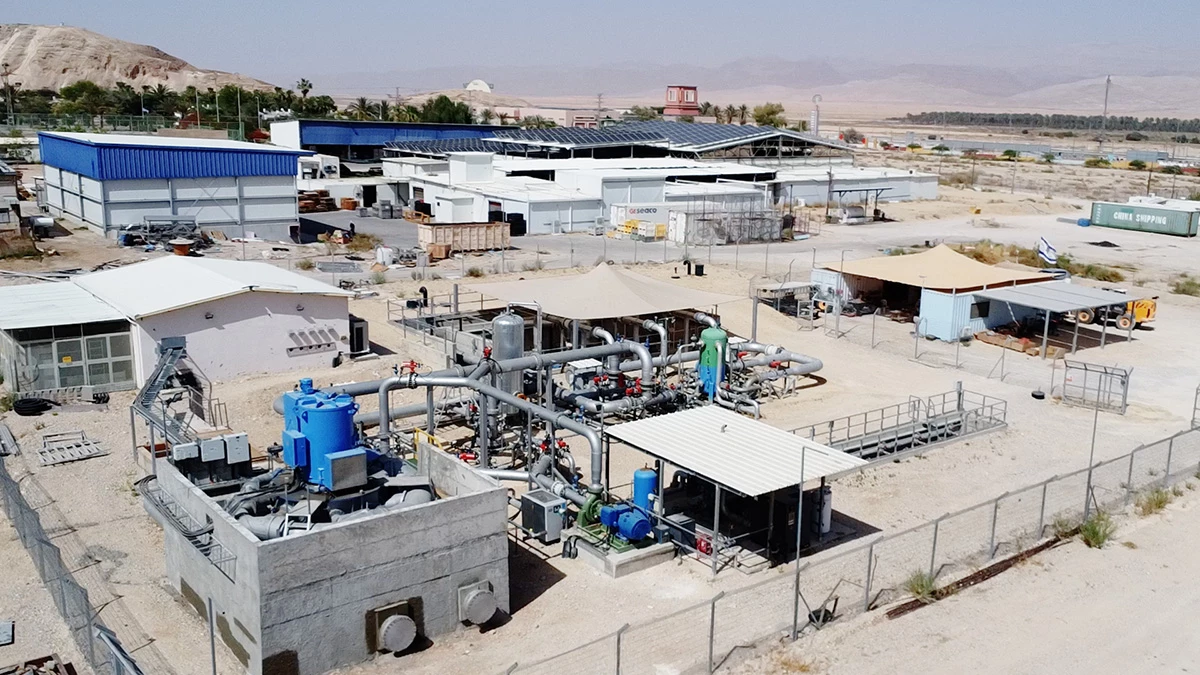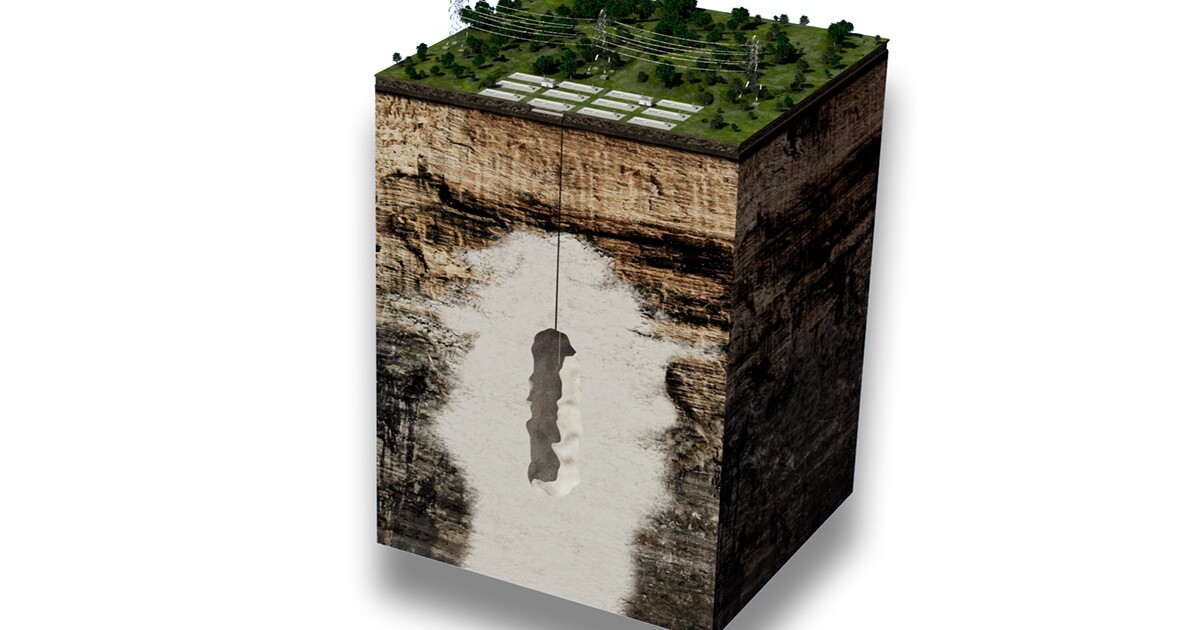We’re currently a lot better at producing clean energy than storing it to use later. That poses a challenge in regions that have long stretches with low wind and sunlight, stressing power grids fed by renewable sources. Augwind Energy believes it might have a found a solution thousands of feet below the ground.
The company has developed a long-duration energy storage (LDES) system called AirBattery that relies on compressed air held in underground salt caverns – hundreds of which are found in South Germany. AirBattery is said to reliably store energy for weeks while requiring a lot less land, water, and capital than more common pumped hydro storage systems.
Here’s how it works: A pump cycles water through an underground liquid piston chamber. As the water rises, it compresses air in an adjoining chamber where the low temperature remains steady, by virtue of it being underground. The compressed air is then piped down to enormous sealed salt caverns thousands of feet below the Earth’s surface for long-term storage.

Augwind Energy
To discharge energy, bubbles of compressed air are released towards a chamber filled with water. As the air expands, it pushes that water through a turbine, which turns to generate electricity. AugWind says its demonstration facility manages a round-trip efficiency of 47%; its commercial setup should see an efficiency of more than 60%. The AirBattery system is said to be able to operate for decades with no degradation and minimal running costs.
Introducing AirBattery Multi-week Energy Storage
The company plans to build its first commercial AirBattery facility in Germany, with a view to have it up and running by 2028. Augwind estimates there are more than 400 suitable salt caverns in Germany alone, each with the capacity to store compressed air that can generate between 3-8 GWh of electricity. All those caverns together could store the equivalent of 65% of Germany’s annual electricity consumption.
The video below details how the AirBattery system functions, with an overview of its demonstration facility.
AirBattery demo- site tour
There are a lot of boxes to be checked off the to-do list yet: Augwind needs to finalize deals with energy traders and owners of these salt caverns, secure permits for its commercial facility, and finalize the AirBattery system design.

Augwind Energy
And while the tech sounds like it might have advantages over pumped hydro storage and lithium-ion batteries in terms of environmental impact, we’re yet to learn what sort of Levelized Cost of Storage (LCoS) to expect over AirBattery’s projected 50-year lifespan. That figure is the true total cost of storing energy over the entire lifetime of a storage system, from installation to operation. It will give us a sense of how AirBattery compares to other LDES systems.
It’s also worth noting that China has been exploring compressed air energy storage using salt caverns recently as well, and that the country has some 2,000 such caverns. However it shakes out, I can’t help but marvel at the idea of using giant underground caverns as batteries.
Source: Augwind








